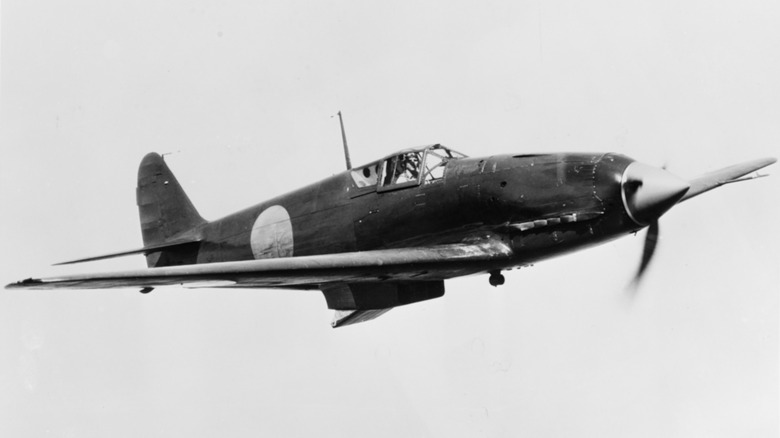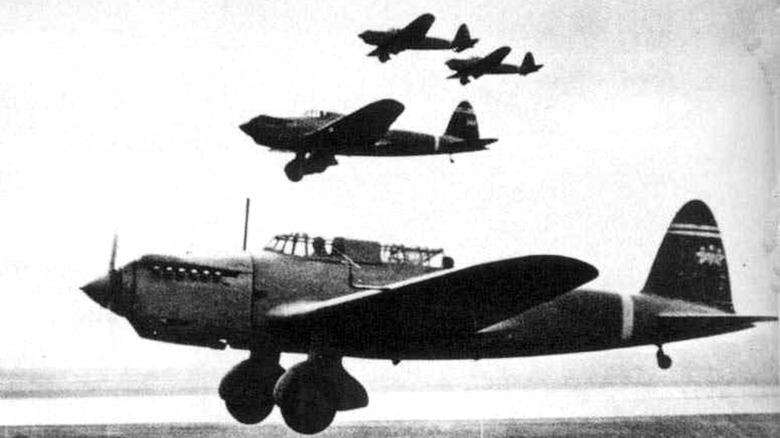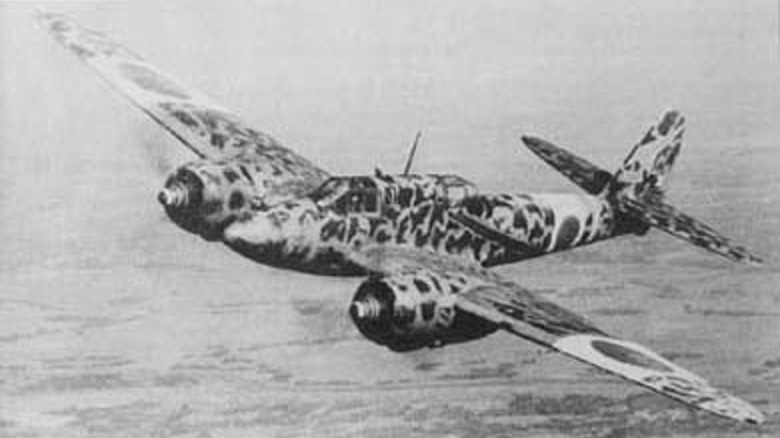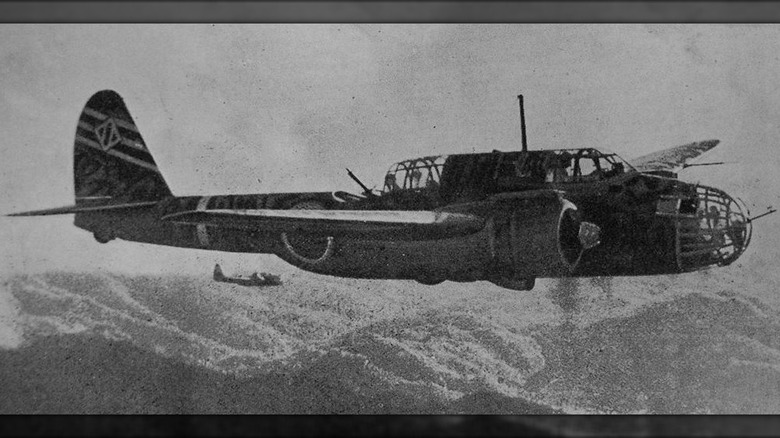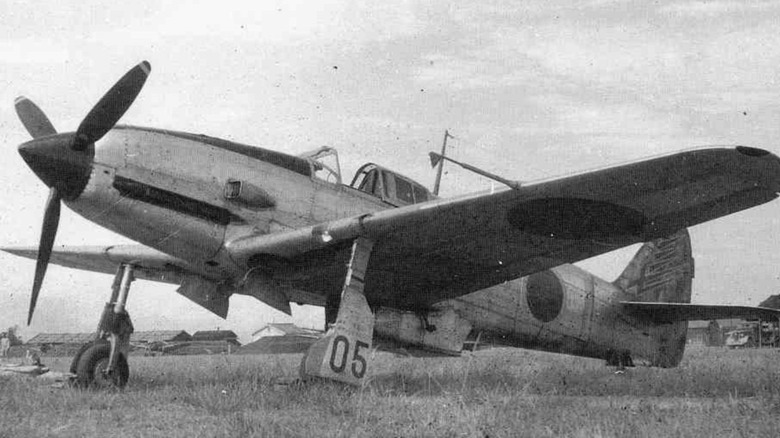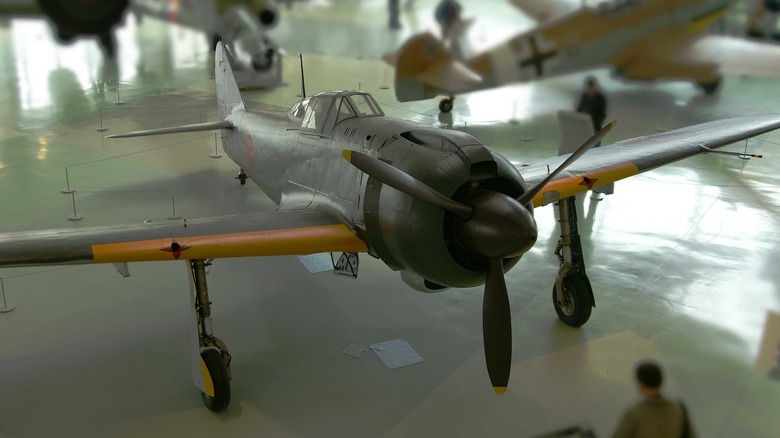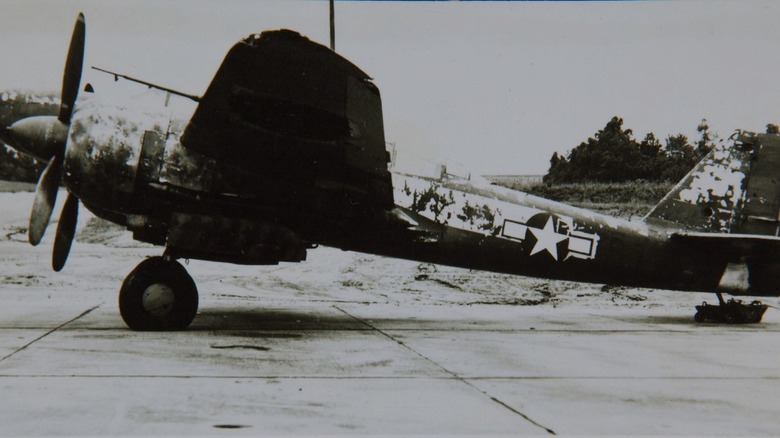6 Aircraft Made By Kawasaki In WW2
World War II was such an all-encompassing conflict that nearly everyone was involved in one way or another. In the United States, civilians gathered scrap metal and other materials for the war effort, and rationing was common throughout civilian populations around the world. In terms of industry, many manufacturers were moved from peacetime production to working to support the war, so it wasn't uncommon for firms like BMW to produce military assets.
The same was true in Japan, where companies like Mitsubishi produced the infamous A6M Zero Japanese fighter. Other companies were also involved, including Kawasaki. While it's probably best known for making motorcycles, jet skis, ATVs, and the likes these days, the company was in full wartime production throughout WWII. During the war, Kawasaki made many things, including several aircraft.
While the Mitsubishi A6M Zero is probably the best-known military fighter used by the Imperial Japanese Army Air Service and one of the top WWII fighter aircraft, several Kawasaki models gave it a run for its money. Many of Kawasaki's aircraft were similar in design, using many of the same components for different builds. These six aircraft were all made by Kawasaki during WWII.
Kawasaki Ki-32
The Kawasaki Ki-32 was classified by Japan as a Type 98 light bomber produced at the beginning of the war, though it was first manufactured in 1938. Japan was already engaged in an ongoing conflict with China since it invaded in 1931, and the Ki-32 saw widespread use during several battles in and around that country, including the Battle of Khalkhin Gol not long after the aircraft entered service. The Allies codenamed the Ki-32 "Mary" in 1942.
The last combat action Japanese pilots saw while flying the Ki-32 came when Japan invaded Hong Kong in December 1941. Additionally, Japan supplied them to the Manchukuo Air Force, which was established in Japanese-occupied Northeast Manchuria, which they renamed Manchukuo.
The Ki-32 was a light bomber, though it was outclassed by the Mitsubishi Ki-30. Regardless, both entered production, primarily to fight in China, and Japan made 854 of them. They cruised at 186 mph but could reach a top speed of 263 mph. The Ki-32's ceiling was 29,265 feet, it had a range of 1,220 miles, and it was armed with two Type 89 7.7mm machine guns. In terms of bombs, the Ki-32 could carry up to 992 pounds of ordnance.
Kawasaki Ki-45 Toryu
The Kawasaki Ki-45 Toryu was given the codename "Nick" by the Allies, while the Japanese designated it a Type 2 two-seat fighter. The aircraft entered production in late 1941, and it continued to serve throughout the war. They were fairly plentiful, as Kawasaki built 1,700 of them before the war's end. The Ki-45 was a large fighter, boasting two Mitsubishi Ha-102 engines and two seats for its two-man crew, and it weighed over 8,800 pounds while empty. The aircraft had a wingspan of nearly 50 feet, so it wasn't a small fighter by any measure.
The Japanese initially used the Ki-45 as a long-range fighter escort for bombers, and it had a maximum ceiling of 33,000 feet, a range of 1,200 miles, and a top speed of 340 mph, so it was well suited to the role. Kawasaki manufactured several variants throughout the war, including a single-seat prototype that was reclassified as the Ki-96, but it wasn't adopted by the Imperial Japanese Army Air Service.
For armament, the Ki-45 was equipped with two forward-facing 20mm cannons, one 37mm machine gun, and a 7.92mm machine gun located in the rear cockpit position, though this varied, depending on the variant. While the Ki-45 was a reliable fighter, it was outclassed by smaller and faster, single-seat, single-engine fighters. As a result, it was primarily used for interceptor missions, and its Mod C was a highly successful night fighter capable of reaching the U.S. B-29 Superfortress' attack height.
Kawasaki Ki-48 Sokei
When Japan faced Soviet Tupolev SB-2 bombers in 1937, it became clear to those involved that a new aircraft was necessary to counter the enemy's speed and maneuverability. This resulted in the development of the Kawasaki Ki-48 Sokei, codenamed "Lily" by the Allies. While the impetus behind the Ki-48's design was higher speeds and maneuverability, it ran into some problems.
The first version of the Ki-48 could meet Japan's new speed requirements, but its payload limited this ability. In order to maintain the ideal maximum top speed specified by the Army Air Service, the aircraft could only carry a payload of 1,763 pounds. Still, the Ki-48 proved an effective dive bomber after entering service in 1940, and by the end of the war, Kawasaki had produced 557. Numerous variants were built as improvements were made in the aircraft's defense, speed, and offensive capabilities.
The Ki-48 was crewed by four personnel, and it was powered via two Nakajima Ha-25 engines. The maximum airspeed was between 298 and 314 mph, and it boasted a range of 1,230 miles with a service ceiling of 31,170 feet. For armament, the Ki-48 carried three 7.7mm machine guns and had a bomb payload of between 882 and 1,764 pounds, depending on the model and mission requirements.
Kawasaki Ki-61 Hien
The Kawasaki Ki-61 Hien, codenamed "Tony" by the Allies, came into being, thanks, in part, to Nazi Germany. Japan licensed the Daimler-Benz 601 engine from the Third Reich and used it as the basis for the Ki-61. Because of this, the Ki-61 is somewhat unique among Kawasaki's fighters developed during the war, as it had the look and feel of an American P-51 Mustang crossed with a German Messerschmitt Bf 109.
Kawasaki built 2,654 Ki-61s, though some accounts list the number as high as roughly 3,000 for all variants. Whatever the amount, there's no denying the Ki-61 was an exceptional light fighter that was fast, maneuverable, and packed a punch. Kawasaki built two primary versions, with the Type II proving more capable, thanks to the 1,450 horsepower supplied by its engine. The aircraft had a wingspan of just under 40 feet, boasted a maximum speed of 379 mph, had a ceiling of 36,089 feet, and a range of roughly 1,000 miles.
For its armament, the Ki-61 was loaded with two 20mm machine guns set into the wings. The aircraft had one issue related to the firing of its guns being unreliable due to them being electrically fired, but that didn't stop it from entering full production and tearing up the skies in the Pacific Theater. One unusual tactic employed by Ki-61 pilots was to ram B-29 Superfortresses in a proven kamikaze attack.
Kawasaki Ki-100
The Kawasaki Ki-61 ran into some production issues when the U.S. bombed the Akashi factory that built its engine in 1944 and 1945. This left many Ki-61 Type II aircraft in a factory without engines, leaving Kawasaki to come up with a solution. The company subbed in a Mitsubishi Ha-112-II engine, which was comparable to the one it replaced. However, it proved superior to the old, leaving Japan with a new fighter on its hands.
With the new engine installed in Ki-61 airframes, Japan redesignated the aircraft as the Ki-100 1A. The success of the conversion resulted in an order of full production, which came with some changes to the fuselage and canopy, resulting in Model 1B. Kawasaki produced 272 Model 1A conversions and 99 of the Model 1B, so there weren't a ton of these fighters flying around the Pacific Theater before the war came to an end there in August 1945.
In terms of specifications, the Ki-100 and Ki-61 were similar, though the performance stats for the former were for the most part an improvement. The Ki-100 had a maximum speed of 360 mph, a service ceiling of 36,100 feet, and a range of 1,367 miles. For armament, the Ki-100 carried two 20mm machine guns in the wings and two 12.7mm machine guns in the fuselage. Additionally, the Ki-100 had hardpoints installed under its wings, each capable of carrying one 551-pound bomb.
Kawasaki Ki-102
One of the last aircraft Kawasaki made for the war was the Kawasaki Ki-102, codenamed "Randy" by the Allies. The aircraft was developed off the platform for the single-seat Ki-96, which was an unproduced prototype of the Ki-45. The Ki-102 was designed with attacking ground targets in mind, and when it entered into production, only 20 of the base models were made.
The subsequent model, Ki-102B, was more widely produced, with 215 made before the end of the war. Despite being based on a single-seat prototype, the Ki-102 regained its second seat for a crew of two. The aircraft entered service in October 1944, and with the Allies on the proverbial door by that time, they were reserved for homeland defense. Some versions of the Ki-102 did see action in the skies over Okinawa, but most of the aircraft remained in mainland Japan for defensive purposes.
Ultimately, three versions of the Ki-102 were made for various missions. The first two models, A and B, featured two Mitsubishi Ha-112 engines, while model C carried two Ha-112-II Ru engines with turbochargers. The model C could fly up to 373 mph, had a ceiling of 44,295 feet, and a range of 1,367 miles. The Ki-102's armament included two 30mm machine guns built under the fuselage and two 20mm cannons mounted in oblique positions. It likely would have been an effective twin-engine high-altitude fighter had the war not come to an end before it could prove itself in combat.
